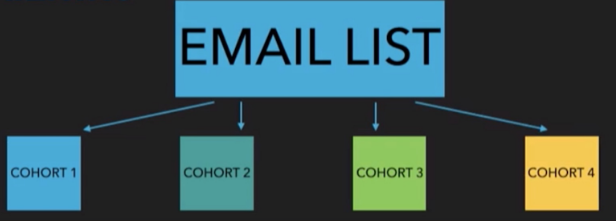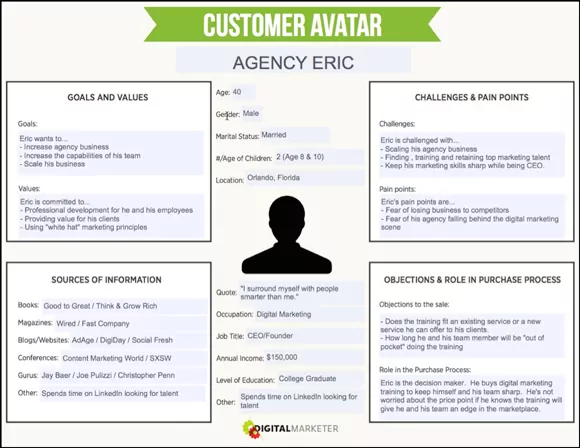What is a customer persona/cohort?
A customer persona or cohort refers to a template-type description about common buyer opinions, wants, desires, and personalities. Most businesses will have multiple cohorts that they reference for marketing purposes. Some of these cohorts might be more trusting and willing to buy while others are cold and need convincing.
Here is an example of what a customer persona might look like.
Cohorts and customer personas should not be confused with list segments or tags. You can certainly segment your email list based on customer personas, but segmentation is not necessarily based on that information and could be based on something else entirely. A segmentation could take a cohort and break it up 50 different ways, while a cohort is the entire personality of a typical prospect or customer for your business.
How can you use customer personas/cohorts?
The best marketers use cohorts and customer personas to identify the type of people they come into contact with, what those people want, and how best to interact with and convert those people. The reality is, not all of your email subscribers are the same. Some of them will buy from you after you give them a 20%-off coupon. Others, though, will take more convincing. And still, others won’t even interact with you until you send them free content which helps solve their own problems first.
This means that you can use customer personas and cohorts to segment your email list (based on interest, behavior, and preferences managed in a subscription center) and send each subscriber what they need when they need it.

Doing so will improve your relationship with your subscribers, give you a better ROI, and increase your conversion rate.
You can also plug these cohorts into other mediums such as Facebook and Google to build your list further — just work to obtain clones of your existing audience segments.
Common types of customer personas/cohorts
Here are a few of the most common types of customer personas/cohorts that you might consider creating for your own business.
- Decisive Buyer — This person is easy to sell to. They already trust your business, they are used to buying things online, and they are interested in your products or services. However, this person probably still needs some convincing in terms of pricing and the actual product or service that you offer. Before this person converts, they need it to make financial sense and your product needs to capable of solving a distinct problem.
- Skeptical Subscriber — This person wants what you are selling, but they have concerns that must be overcome before they decide to purchase. They might be unsure of whether you can deliver on your promises, they might believe your price is too high or too low (consider perceived value), or they might lack clarity about how your product or service actually benefits them.
- Indifferent Subscriber — This person is indifferent to your business, your products, and even the emails that you send. They likely don’t open your emails very often and when they do, they don’t click. They probably aren’t very interested in your business because they aren’t your ideal market. These are the people that you should send re-engagement campaigns and if they don’t open or click, remove from your list altogether.

 (
(